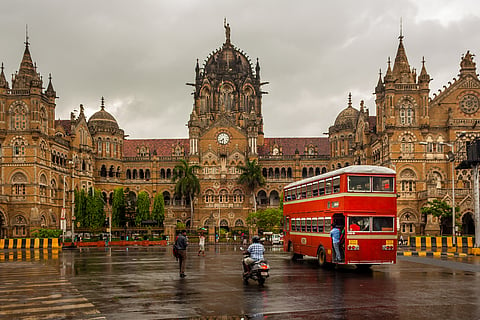
- Destinations
- Experiences
- Stay
- What's new
- Editor’s Picks
- Responsible Tourism
- CampaignsCampaigns
- Subscribe

Remember the iconic train scene of Raj and Simran from Dilwale Dulhaniya Le Jayenge Or the scenes on stations and trains from Jab We Met, Dil Se, Chennai Express.... It's no wonder that train journeys are highly romanticised in India. Sitting near the window and watching as it runs past fields, rivers, forests, and hills - that is something we all must have all experienced at least once in our life.
As beautiful as it is to look at these passing scenes from the trains, it is equally exciting to experience the chaos of Indian railway stations that are full of life. From serving up delicious samosas to kulhar chai, people waiting for their family members arriving in trains to coolies running to get customers, there is something about railway stations that adds to your journey in life.
It has now been nearly two centuries since the first train was launched in India in 1853 from the first railway station in India, named Bori Bunder in Mumbai. And today, approximately 30 million passengers travel across the country per day. This travel season, we bring to you a line-up of some of the oldest railway stations in the country which ooze chaos, charm and history in buckets.
Howrah, Kolkata
The station is India&rsquos oldest railway station. It was built in 1852 but started operating in 1853. Known to be one of the world&rsquos busiest railway stations, Howrah Railway Junction has 23 platforms serving one million passengers by 600 passenger trains on a daily basis. The historic red structure holds an important place in the railway history of India as it was also one of the stations from where the first train in India passed. The iconic building with a clock is built in a Romanesque style of architecture, and was designed by the British architect Halsey Ralph Richard. It has lofty towers, enormous brick arches, and windows.
Royapuram Railway Station, Chennai
Considered to be India&rsquos second oldest railway station, Royapuram Railway Station is 167 years old. It was inaugurated on July 1, 1856, by Lord Harris. The first passenger train that left the station carried the Governor of Madras Presidency, Lord Harris and 300 European delegates. The railway station was constructed by Madras Railway Company, with the heritage building being designed by William Adelpi Tracey. The architecture of the structure follows grand Corinthian columns inspired by the colonial style with the red and white colour of the building. The station underwent a renovation in 2005 but still does not experience much traffic due to off routes.
Chhatrapati Shivaji Terminus, Mumbai
A great example of the merging of Victorian Gothic revival architecture with traditional Indian architectural elements, Mumbai&rsquos Chhatrapati Shivaji Terminus is a UNESCO World Heritage Site whose construction started in 1878 and was completed in 1888. Formerly known as Victoria Terminus (until 1995), the station was designed by British architect F.W Stevens who also took some inspiration from the late Italian medieval models. The octagonal ribbed dome forms the crown of the terminus with statues and carvings of peacocks, tigers, and other wildlife. It is made up of yellow Mallard stone, which forms enormous arches which have crevices along with distinguishable gargoyles, making it one of the most beautiful railway stations in the world.
Charbagh Railway Station, Lucknow
Situated in the City Of Nawabs, Charbagh Railway Station was built in 1915. Regarded as an architectural marvel, the station is built in a way that it looks like a chess game when viewed aerially. The Indo Saracenic Style, along with Mughal, Awadh, and Rajput architectural designs, was designed by the architect J H Horniman. It has its historical significance as it is believed that India's first Prime Miniter, Pt. Jawaharlal Nehru met Mahatma Gandhi for the first in the quarters of Charbagh Railway Station. As the name suggests, Charbagh - which means four gardens - is surrounded by three beautiful gardens and a sprawling garden towards the entrance. It also has an adjacent Choti Line, which can be understood as an extension of the station and is also functional. The majestic arches painted in red and white add to the beauty of the structure.
